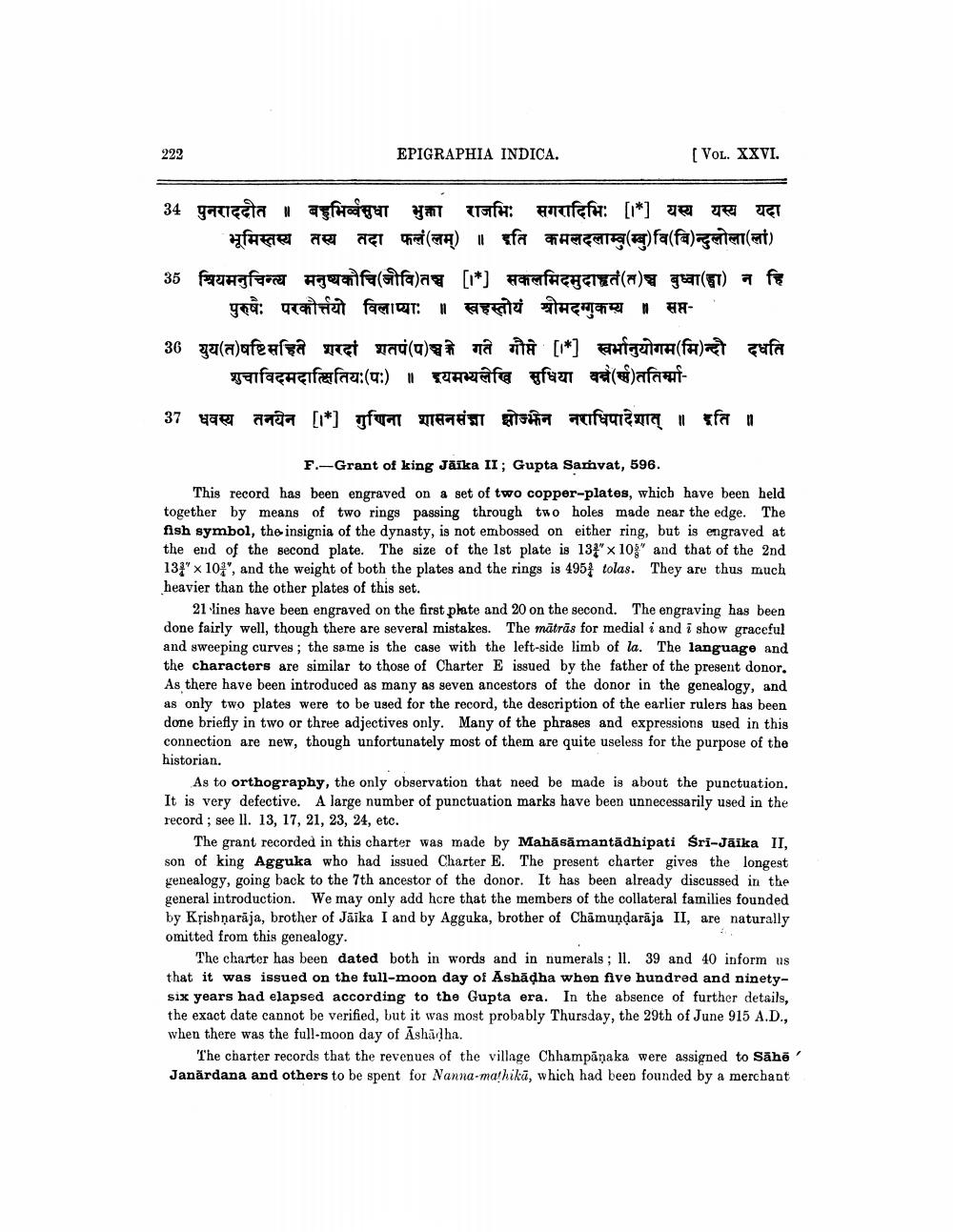________________
222
EPIGRAPHIA INDICA.
(Vol. XXVI.
34 पुनराददीत ॥ बहुभिर्वसुधा भुक्ता राजभिः सगरादिभिः [*] यस्य यस्य यदा
Helene HCI (W) # fa FACE()fa(fa) (at)
35 Fungfer quafasifaay [1*] MACHETE (A)? qu(ET) a fe
goa: want then faciat: a nd he un36 युय(त)षष्टिसहिते शरदां शतपं(प)ञ्चके गते गौप्ते [*] वर्भानुयोगम(मि)न्दी दधति
शुचाविदमदाक्षितियः(पः) । इयमभ्यलेखि सुधिया वन्वे(म)ततिर्मा
37 yer anda [*] gruan maHST antsima afautem
l
x for
an
F.-Grant of king Jāíka II ; Gupta Samvat, 596. This record has been engraved on a set of two copper-plates, which have been held together by means of two rings passing through two holes made near the edge. The fish symbol, the insignia of the dynasty, is not embossed on either ring, but is engraved at the end of the second plate. The size of the 1st plate is 134" x 10%" and that of the 2nd 131" x 10", and the weight of both the plates and the rings is 4954 tolas. They are thus much heavier than the other plates of this set.
21 Vines have been engraved on the first plate and 20 on the second. The engraving has been done fairly well, though there are several mistakes. The mātrās for medial i and i show graceful and sweeping curves; the same is the case with the left side limb of la. The language and the characters are similar to those of Charter E issued by the father of the present donor. As there have been introduced as many as geven ancestors of the donor in the genealogy, and as only two plates were to be used for the record, the description of the earlier rulers has been done briefly in two or three adjectives only. Many of the phrases and expressions used in this connection are new, though unfortunately most of them are quite useless for the purpose of the historian.
As to orthography, the only observation that need be made is about the punctuation. It is very defective. A large number of punctuation marks have been unnecessarily used in the record; see ll. 13, 17, 21, 23, 24, etc.
The grant recorded in this charter was made by Mahāsāmantādhipati Śri-Jāika II, son of king Agguka who had issued Charter E. The present charter gives the longest genealogy, going back to the 7th ancestor of the donor. It has been already discussed in the general introduction. We may only add here that the members of the collateral families founded by Krishnarāja, brother of Jāika I and by Agguka, brother of Chamundarāja II, are naturally omitted from this genealogy.
The charter has been dated both in words and in numerals; II. 39 and 40 inform us that it was issued on the full-moon day of Ashādha when five hundred and ninetysix years had elapsed according to the Gupta era. In the absence of further details, the exact date cannot be verified, but it was most probably Thursday, the 29th of June 915 A.D., when there was the full-moon day of Ashüdha.
The charter records that the revenues of the village Chhampāņaka were assigned to Sāhā' Janardana and others to be spent for Nanna-mathikā, which had been founded by a merchant




